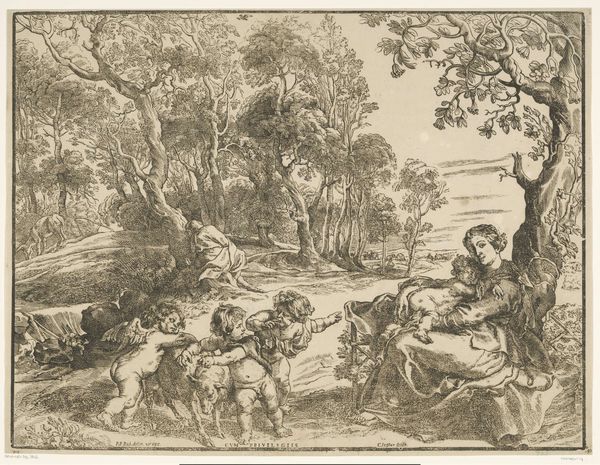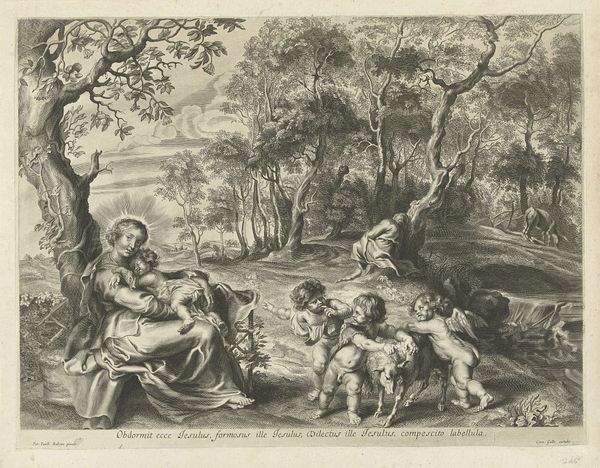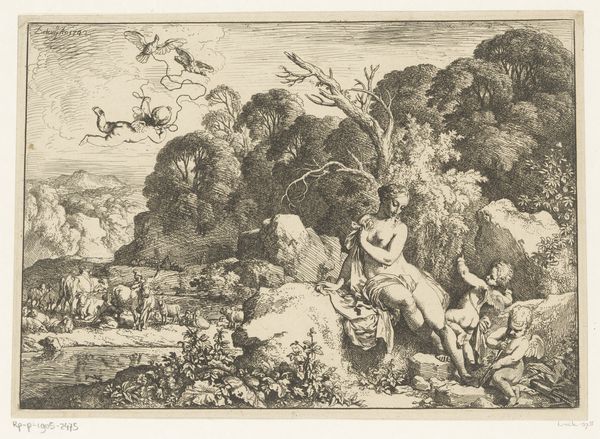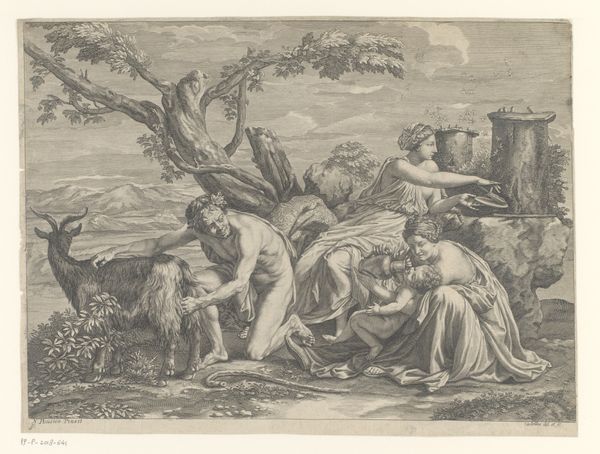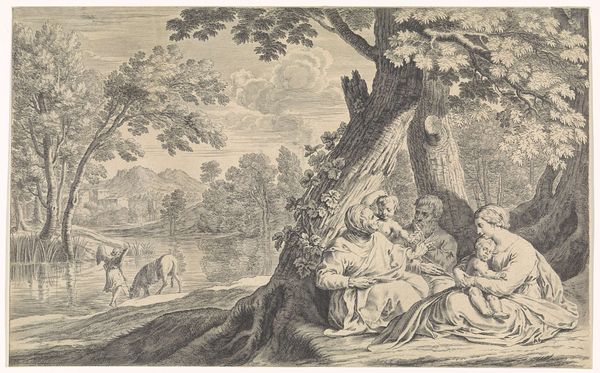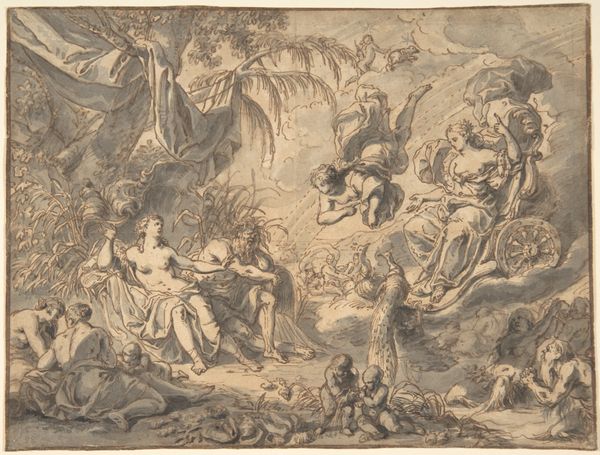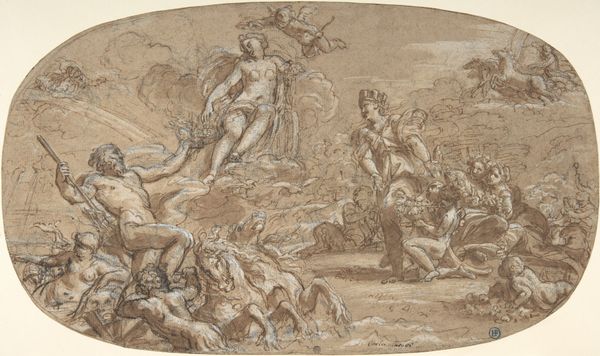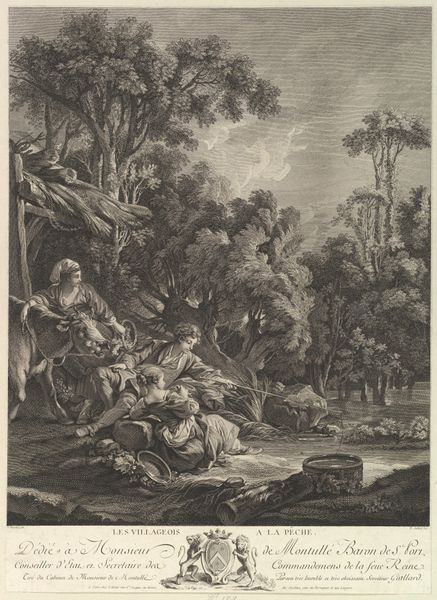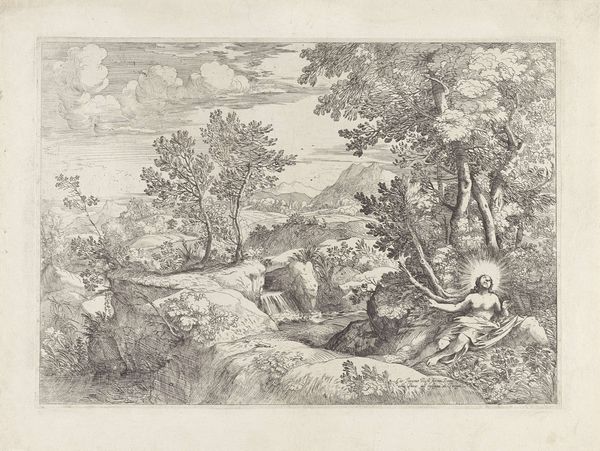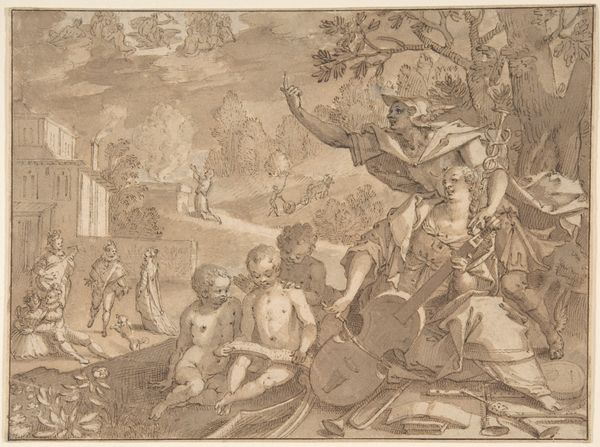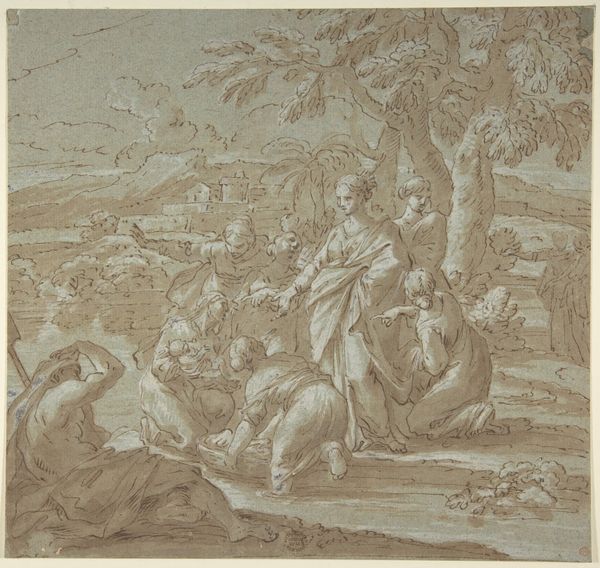
ink, engraving
#
baroque
#
ink painting
#
landscape
#
figuration
#
ink
#
history-painting
#
engraving
Dimensions: height 458 mm, width 602 mm
Copyright: Rijks Museum: Open Domain
Christoffel Jegher created this chiaroscuro woodcut, Rest on the Flight into Egypt, sometime between 1606 and 1653. During the 17th century, the Catholic Church played a significant role in shaping cultural and artistic narratives. Here, Mary is portrayed as a nurturing mother, resting with the infant Jesus during the flight to Egypt. Jegher’s choice to depict Mary as gentle and serene emphasizes her humanity. Meanwhile, the frolicking cherubs and idyllic landscape serve as a sharp contrast to the danger that the family is escaping. This image thus becomes a statement about the sanctity of motherhood. This work speaks to the tension between the public role of religious icons and their private, emotional lives, which in turn invites us to consider the intimate bond between mother and child.
Comments
rijksmuseum about 2 years ago
⋮
Jegher’s print is a simplified version of painting by Rubens from the 1630s. In the painting the Virgin is surrounded by saints, who are missing in the print. This is an impression of the finished print, thus a stage further than the adjacent impression. The white lines have been cut out of the tone block, almost entirely in keeping with Rubens’ instructions.
Join the conversation
Join millions of artists and users on Artera today and experience the ultimate creative platform.
rijksmuseum about 2 years ago
⋮
In addition to a host of engravers, Rubens also engaged the woodcutter Christoffel Jegher to reproduce his work. Jegher’s, often sizeable, sheets were printed in two colours and will have mostly served as wall decoration. This proof impression is printed with two blocks: a line block, and a tone block for the ochre tint. In this impression Rubens indicated with brush and wash where the white lines had to be cut away in the tone block.
